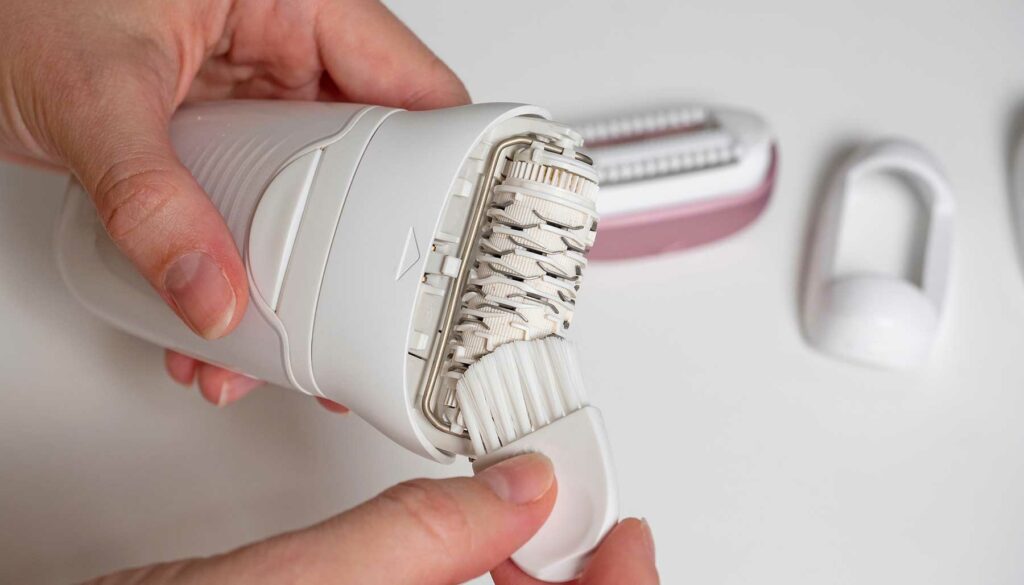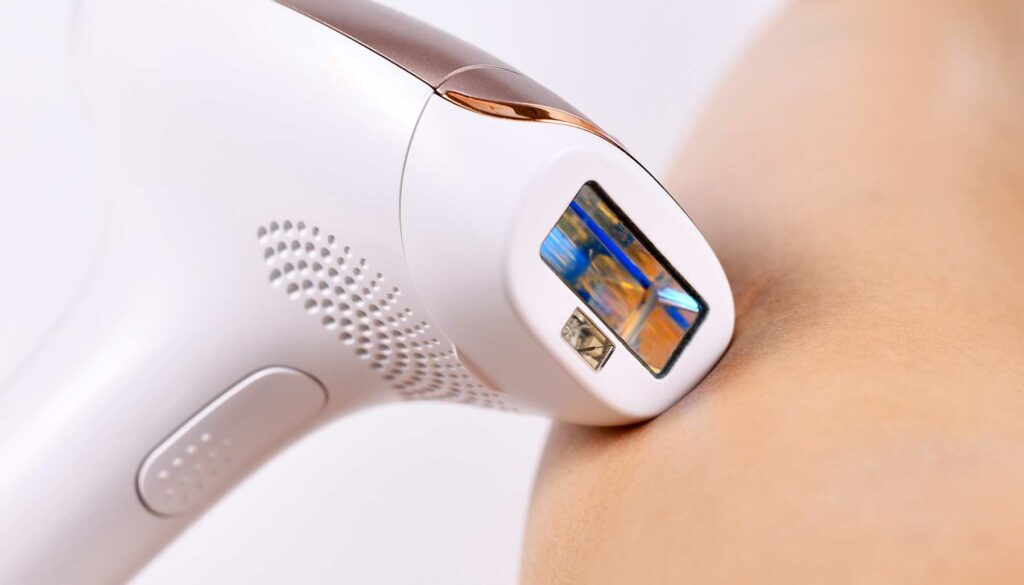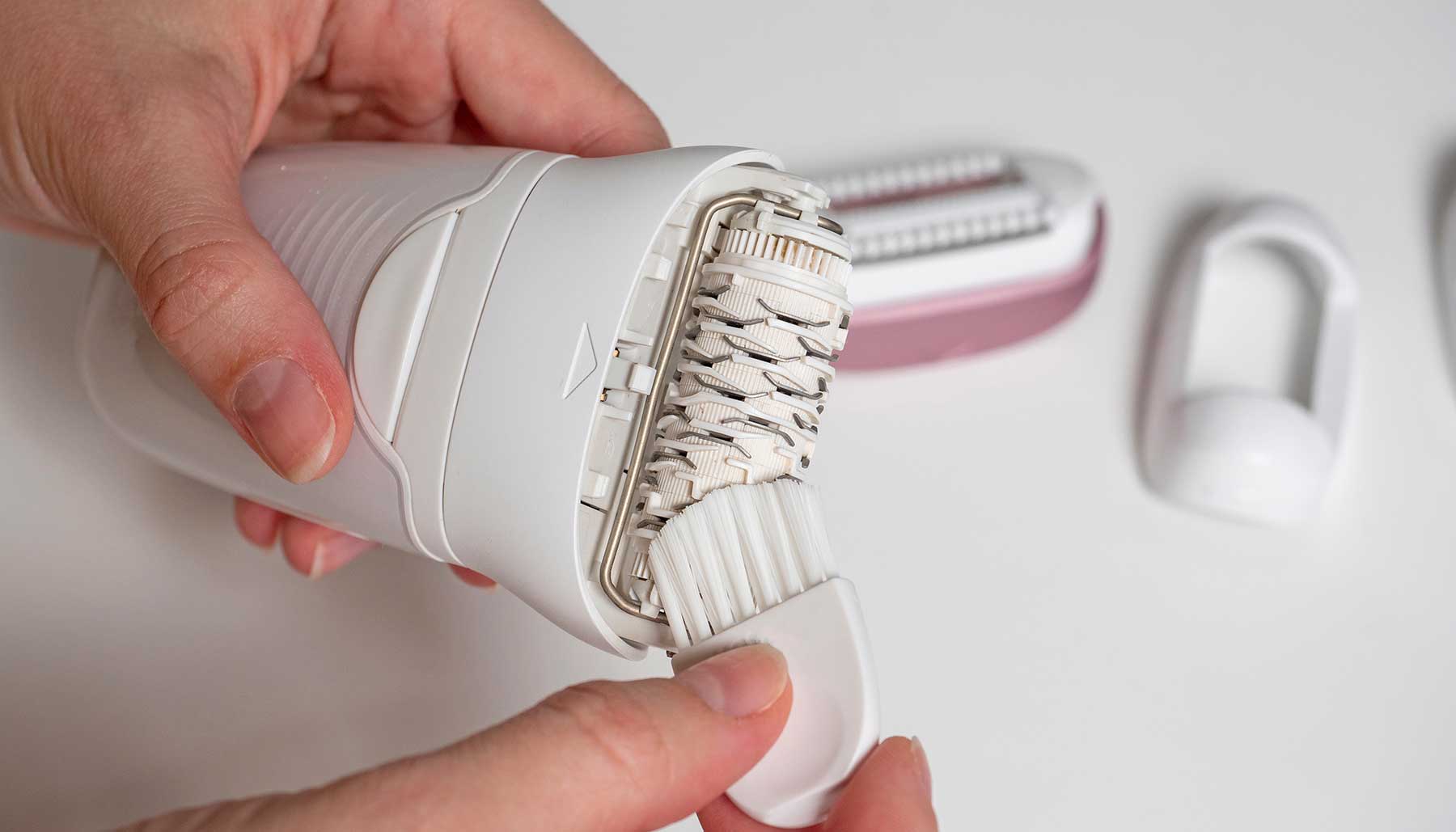If you’re hoping to get rid of body hair here and there, you definitely have plenty of options. But with so many different ways to go, how do you know which product to choose?
Each hair removal process has its own pros and cons. Some methods are better than others for certain parts of the body, and there are treatments that work better with certain kinds of hair. Oh, and don’t forget – some of them aren’t exactly painless!
The best method for you will depend on a few different variables: the area you are treating, your hair texture and thickness, your pain tolerance and comfort level, and your budget. Let’s take a look at some of the most common methods of hair removal, including how long results will last, how much they hurt, and more.
Shaving

Obviously, a good old razor will do the trick. It’s been around for a long time and is one of the oldest methods of hair removal. It involves using a razor with a sharp blade to remove the hair at the surface of your skin. You want to shave against the direction of the hair growth to get the closest shave, and using a sharp, fresh blade is best. Dull razor blades won’t glide as smoothly, making it more likely you’ll end up with cuts and nicks. They also won’t give you as clean of a shave as a newly replaced blade.
This one will only keep you smooth for one or two days. It really depends on how fast or slow your hair grows. To stay smooth all the time, you’ll have to do it every day or every other day for maintenance.
This method is best for your legs and underarms. It’s doable in the bikini area, but you are more likely to experience skin irritation and razor burn down there.
Waxing

Waxing is a pretty popular method of hair removal and can be done professionally or by yourself at home. There are a few different ways to do it, but they all generally include covering the area with wax and then removing it quickly. When the wax comes off, it pulls the hair out with it. In order for waxing to work, your hair has to be at least a quarter inch long, so the wax has something to adhere to.
There are a few different kinds of wax that will get the job done:
- Soft wax – This is the wax you use with strips. Some strips come with wax already on them, and sometimes you apply the wax directly to your skin and then place the strip on top. You can only use this kind of wax once per session. If you wax the same area multiple times, it could cause damage to your skin (and it hurts!).
- Hard wax – Hard wax doesn’t require strips. You apply it warm to the skin, and then give it time to cool and harden. This kind of wax tends to be less painful than soft wax, because it doesn’t pull at your skin. It can be used in the same area more than once in the same session.
- Sugar wax – Sugaring, or sugar wax, is done with a substance made of sugar, lemon, and hot water. This stuff won’t stick to your skin either, so it can be used multiple times without causing skin damage.
Wax has a few benefits that some other hair removal methods don’t. It will even get to the tiny, fine hair strands that you can’t see, leaving you with really smooth skin. The results also tend to last for a longer period of time. You could stay smooth for anywhere from two to six weeks. That’s because waxing removes hair from down in the follicle, not just at the surface of the skin.
You can use this method for anywhere on the body. Waxing is often the choice for the bikini area, or to remove hair on the upper lip.
Of course, waxing isn’t exactly painless. It might not be a good choice for everyone, especially in sensitive areas.
Depilatory Cream

Who wears short shorts?
Depilatories are those hair removal creams from brands like Nair, Veet, and Nad’s. You just apply a layer of cream to the area, wait a few minutes, and wipe away. It works by chemically breaking down the bonds in our hair proteins, which weakens them and makes them break off. That means no nicks and cuts from razors, and no pain from pulling hair out with wax.
These creams dissolve the hairs just below the surface of the skin – so not as deep as waxing, but definitely deeper than shaving. This means that it will last longer than shaving, usually around two to six days. It is able to get those tiny, fine hairs that you can’t see, just like waxing.
When using a depilatory cream, you can only apply it to an area once per session. If you try to reapply the product, it will aggravate or even hurt your skin. All that irritation is also why you have to follow the directions, and never leave it on longer than the directions say.
Depilatory creams are used all over the body, but always purchase the right kind. There are creams made specifically for sensitive areas, like the face and bikini area. If you use the same cream on your face that you use on your legs, it might be too harsh.
Epilators

Technically speaking, waxing is a form of epilation. It really just means pulling the hair out down to the root. However, epilators are a method of mechanical epilation. It kind of resembles an electric razor. Think of it kind of like tweezing on steroids. It has a spinning wheel that grabs multiple hairs simultaneously and pulls them out at the root.
It pulls the hairs out at the root, just like with waxing. That means the results will last for a while, usually around two to four weeks. You don’t have to wait for it to get as long as you do with waxing, though. The most notable benefit is that epilation will cause the hair to grow back slower and finer. That’s because epilation damages the hair follicle.
Epilators definitely aren’t painless. It’s essentially tweezing a bunch of hairs at once, so you can imagine it’s not the most comfortable treatment. Even still, epilators can be used all over the body, from head to toe. It’s more effective on dry skin, but it might be less painful on wet skin.
Intense Pulsed Light

Intense Pulsed Light, or IPL, is a treatment that uses strong pulses of light to remove hair. The light targets pigment in the hair. When the pigment absorbs the light, energy builds up and is converted into heat, resulting in damage to the hair follicle. It can cause delayed regrowth of the hair, and even permanent destruction of the hair follicle.
Because all of our hairs are in different phases of their cycles at the same time, you need repeated treatments to catch all of them. IPL only works on hair during a particular phase of the cycle. You might have to wait several weeks before you see any visible results, and it could take a year before you are actually hair-free in your chosen area.
The name makes it sound kind of scary, but it’s not as painful as the name might imply. For the most part, people will tell you it feels akin to a rubber band flick, or (not surprisingly) a burst of heat. Professional IPL machines have built-in cooling systems to make it more comfortable.
I’ve written more in-depth about IPL hair removal, if you want to check it out here.
Laser Hair Removal

This is when hair removal starts getting pretty serious!
In theory, laser hair removal sounds similar to IPL: they target the dark pigment in your hair follicles. The light energy is converted to heat, which damages the hair follicles. This can slow down or stop future hair growth. The difference here is the kind of light used. IPL treatment uses a broadband pulsed light source. Professional laser treatment is more selective, focusing all that energy directly at that hair follicle. This makes laser hair removal more effective, requiring less treatments and showing results faster.
Laser hair removal is the go-to choice for anyone hoping to see long-lasting results. While you might find some at-home laser hair removal devices available, it’s best to get this one done by a pro. See a dermatologist or visit a hair removal facility. Sessions are expensive, but could end up a good investment because it saves you time and money in the future. No more buying razors!
This one isn’t a one-and-done treatment. It will take three to five sessions before you see a big reduction in hair growth. It’s also important to note that even though we call it “permanent,” it’s not exactly permanent. You might need to repeat treatment every so often to keep the hair gone for good.













